Input interpretation

1-vinylnaphthalene
Chemical names and formulas
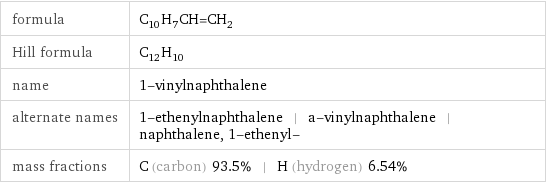
formula | C_10H_7CH=CH_2 Hill formula | C_12H_10 name | 1-vinylnaphthalene alternate names | 1-ethenylnaphthalene | a-vinylnaphthalene | naphthalene, 1-ethenyl- mass fractions | C (carbon) 93.5% | H (hydrogen) 6.54%
Lewis structure
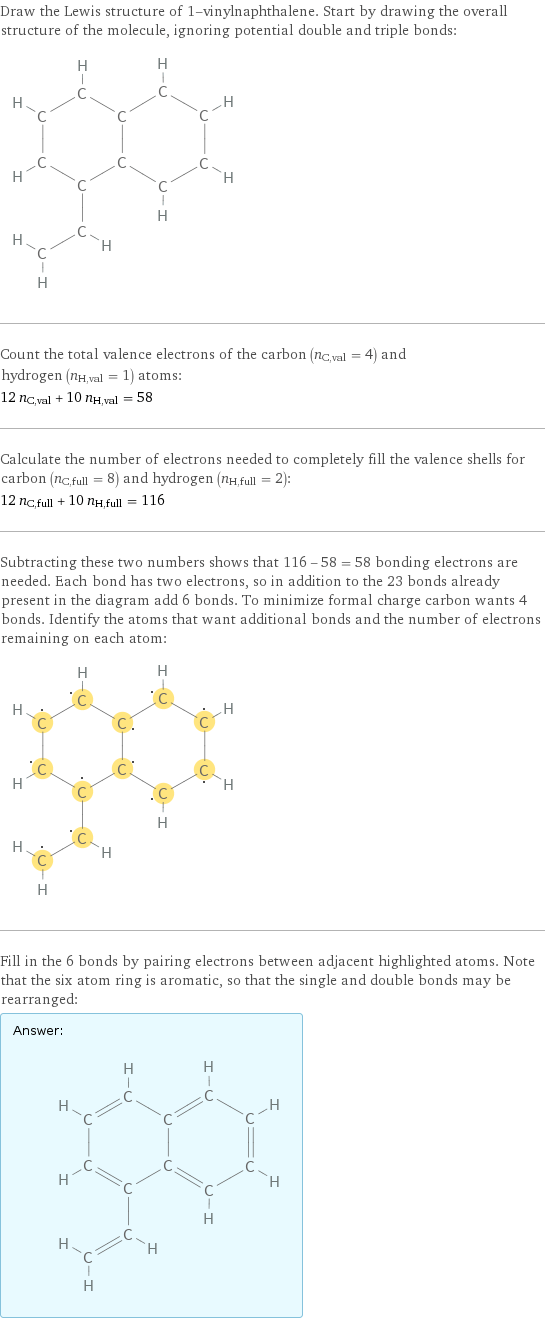
Draw the Lewis structure of 1-vinylnaphthalene. Start by drawing the overall structure of the molecule, ignoring potential double and triple bonds: Count the total valence electrons of the carbon (n_C, val = 4) and hydrogen (n_H, val = 1) atoms: 12 n_C, val + 10 n_H, val = 58 Calculate the number of electrons needed to completely fill the valence shells for carbon (n_C, full = 8) and hydrogen (n_H, full = 2): 12 n_C, full + 10 n_H, full = 116 Subtracting these two numbers shows that 116 - 58 = 58 bonding electrons are needed. Each bond has two electrons, so in addition to the 23 bonds already present in the diagram add 6 bonds. To minimize formal charge carbon wants 4 bonds. Identify the atoms that want additional bonds and the number of electrons remaining on each atom: Fill in the 6 bonds by pairing electrons between adjacent highlighted atoms. Note that the six atom ring is aromatic, so that the single and double bonds may be rearranged: Answer: | |
3D structure
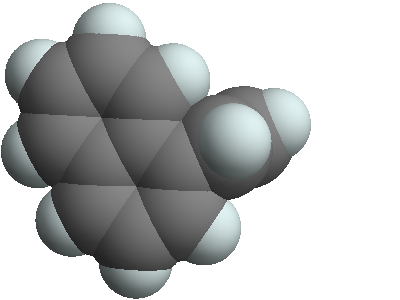
3D structure
Basic properties
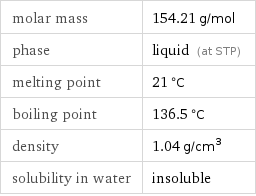
molar mass | 154.21 g/mol phase | liquid (at STP) melting point | 21 °C boiling point | 136.5 °C density | 1.04 g/cm^3 solubility in water | insoluble
Units

Liquid properties (at STP)

density | 1.04 g/cm^3 vapor pressure | 0.01 mmHg (at 25 °C) refractive index | 1.653
Units

Thermodynamic properties

molar heat of vaporization | 48.9 kJ/mol specific heat of vaporization | 0.3171 kJ/g (at STP)
Chemical identifiers
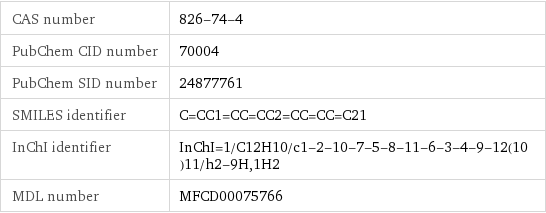
CAS number | 826-74-4 PubChem CID number | 70004 PubChem SID number | 24877761 SMILES identifier | C=CC1=CC=CC2=CC=CC=C21 InChI identifier | InChI=1/C12H10/c1-2-10-7-5-8-11-6-3-4-9-12(10)11/h2-9H, 1H2 MDL number | MFCD00075766
NFPA label

NFPA label
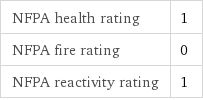
NFPA health rating | 1 NFPA fire rating | 0 NFPA reactivity rating | 1
Safety properties

flash point | 116 °C